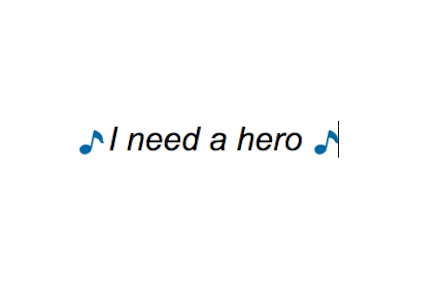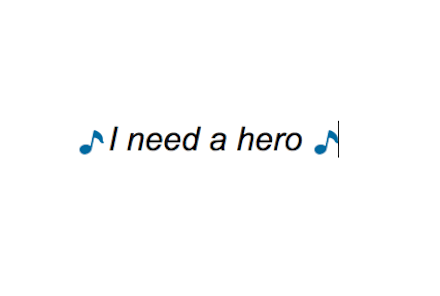Advertisement
Do You Bounce Back From Breakups Quickly? This Is Your Attachment Style & What It Means

While some of us are unable to recover for months after a romantic breakup—as if our whole world has shattered—others take the end of romance in stride, get over it, and jump back into the dating pool. That should be a good thing, right?
And yet, when we bounce back too quickly from a failed relationship, others may see us as shallow or insensitive, and we ourselves may be puzzled and even feel guilty.
But if you're the type who recovers quickly from a breakup, there's no need to feel guilty. According to scientific studies, your resilience may be a natural—and beneficial—trait of what's called avoidant attachment. Understanding how attachment styles work and knowing your own attachment type can not only help explain quick post-breakup recoveries; they can also help you choose a more appropriate partner—so maybe next time there's no breakup at all.
First, let's review the basics of attachment theory.
Attachment theory has been around for decades and is widely accepted by those who study human development and social psychology. Here's the core idea: Human beings are born helpless, so we are hard-wired at birth to search for and attach to a reliable caregiver for protection. Usually this is the mother, but it can also be the father, grandparent, or other adult. The quality of that first bond—loving and stable or inconsistent or even absent—actually shapes the developing brain, influencing us throughout life in how we deal with loss and how we behave in relationships.
Researchers speak of three different types of attachment that can be created in infancy and that typically continue into adulthood: secure, anxious, and avoidant.
Secure: When infants receive care that is reliable and responsive, they are likely to develop a secure attachment. Adults with secure attachment easily trust others, are comfortable with intimacy, are resilient in the face of loss, and are able to enjoy long-term, stable relationships. About 55 percent of people have secure attachment.
Anxious: When the care an infant receives is unreliable—sometimes available, sometimes not—it can produce an anxious attachment. Anxious adults often crave intimacy yet never quite trust their partner's affection and require frequent reassurance. About 15 percent of people have anxious attachment.
Avoidant: Infants who consistently fail to receive responsive care come out of childhood with an avoidant attachment. As adults, people with avoidant attachment tend to be uncomfortable with intimacy. They're often not deeply invested in relationships and instead prefer to be independent and self-reliant, and so when a relationship ends, they're able to get over it without too much time dwelling on the loss. About 25 percent of people have avoidant attachment.
We can easily learn our attachment type by taking a simple five-minute quiz developed by attachment researchers. The Experience in Close Relationships Quiz includes 36 statements about how you generally feel in emotionally intimate relationships. You can take the quiz here.

If you're avoidant, don't panic.
When you look at the descriptions of all three styles, it's easy to look at the avoidant folks and assume they're "the bad ones." But that's far from true—there's no such thing as a "bad" style of connecting with others. You seek what you seek. Nobody's needs, preferences, and desires are less valid than anybody else's.
If the quiz confirms that your attachment type is avoidant, you can actually use this knowledge to help choose an appropriate mate because some attachment types will likely make better partners for you than others.
Another avoidant person, for example, is not your best choice because when relationship problems arise—as they inevitably do—just like you, they are going to be inclined to walk away. To get through the rough patches, a successful couple really needs at least one partner who is willing to stick it out and make the effort to get through the tough times.
An anxious person is also not a good choice for you. In fact, the combination of anxious and avoidant is the worst pairing of attachment types because you'll have opposite needs for intimacy: The anxious will crave closeness, while the avoidant will value independence. As a result, the anxious person, feeling pushed away, becomes even clingier and in need of reassurance—a neediness that only pushes the avoidant partner further away. It's a likely unhealthy scenario you want to avoid.
That leaves people with secure attachments—and they should be your top choice for romantic partners. Secure people will generally be best able to understand your avoidant nature and be willing to accept it and adjust their expectations about the relationship to take into account your need for privacy, independence, and alone time. Fortunately, your best choice for romantic partners—those with secure attachment—are also the largest group in the population.
It's also possible to shift your behavior.
If your attachment style doesn't reflect the way you personally want to behave in your relationships, there are ways to adjust your responses. Self-awareness is the first step toward making changes that benefit you.
"While the heart can be fickle, the human brain is incredibly complex, constantly changing, and can build healthy new habits and ways of loving," writes marriage counselor Linda Carroll, M.S., at mbg. "Practicing mindfulness is essential for any change. In relationships, shifting from reactiveness to responsiveness can lift us out of our early attachment patterns toward a healthier, more secure style."
If you want to be closer to a partner than you otherwise might normally be, try using your instinctual desire for independence in a different way: by realizing you can independently choose to be more intimate, that it's your own choice to do so, not something being forced upon you. You can also put limits on the couple time: perhaps being close on the weekends but keeping plenty of alone time during the week, or vice versa. The point is, you can move toward greater intimacy in stages, as it feels comfortable, without giving up all your privacy.
At the end of the day, prioritize honesty.
Remember, with any prospective partner you meet, you should be honest about your own attachment type and what it means. There's no point in pretending to be more eager than you are for intimacy, cuddles, and soul-mating. You want, after all, to find someone who accepts your attachment type and will be comfortable with you just as you are.
Watch Next
Enjoy some of our favorite clips from classes
Enjoy some of our favorite clips from classes
What Is Meditation?
Mindfulness/Spirituality | Light Watkins
Box Breathing
Mindfulness/Spirituality | Gwen Dittmar
What Breathwork Can Address
Mindfulness/Spirituality | Gwen Dittmar
The 8 Limbs of Yoga - What is Asana?
Yoga | Caley Alyssa
Two Standing Postures to Open Up Tight Hips
Yoga | Caley Alyssa
How Plants Can Optimize Athletic Performance
Nutrition | Rich Roll
What to Eat Before a Workout
Nutrition | Rich Roll
How Ayurveda Helps Us Navigate Modern Life
Nutrition | Sahara Rose
Messages About Love & Relationships
Love & Relationships | Esther Perel
Love Languages
Love & Relationships | Esther Perel












